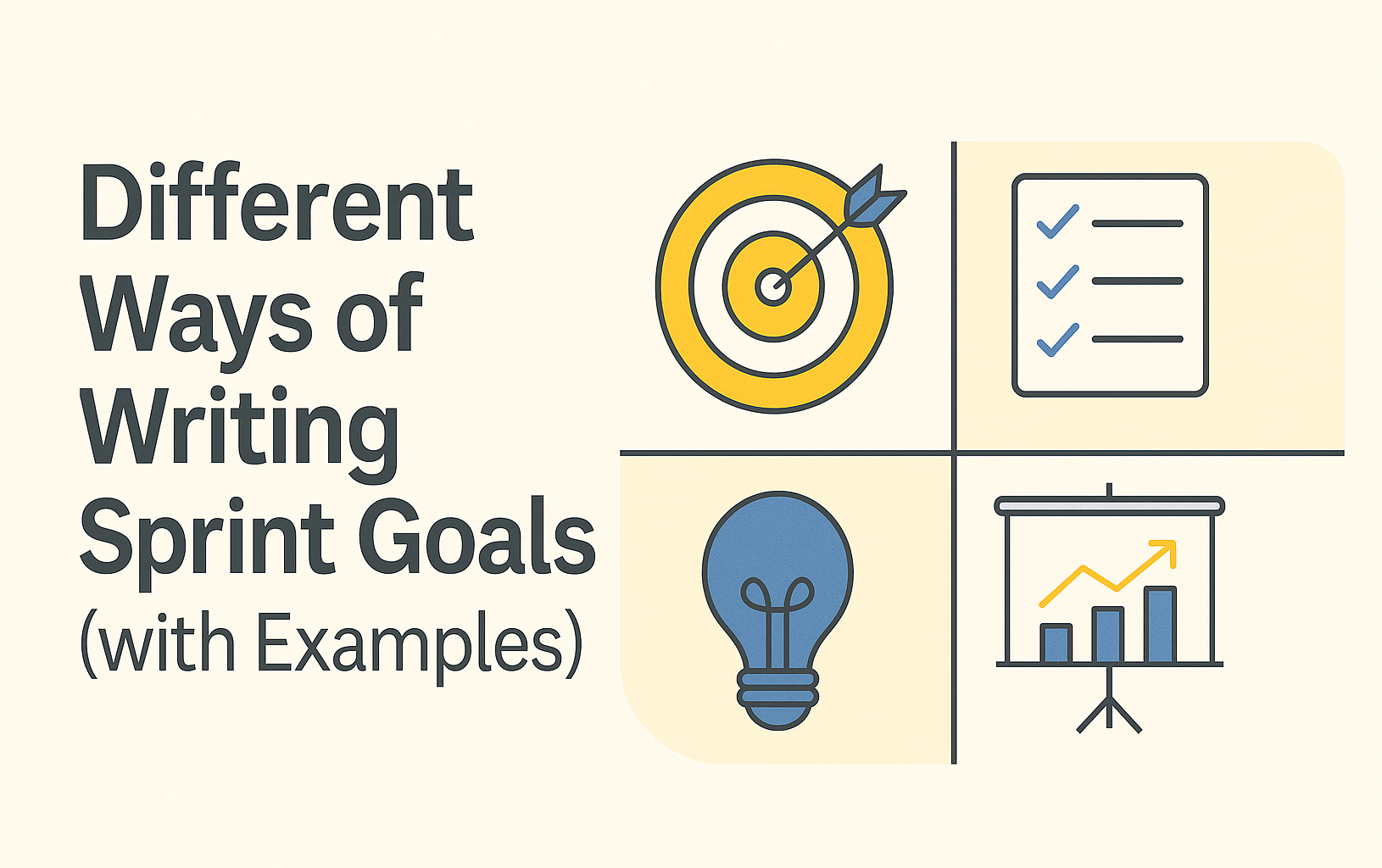In Scrum, the Sprint Goal plays a crucial role in guiding the team’s efforts during a Sprint. It acts as a north star, providing direction, focus, and purpose beyond just completing a set of tasks. While the Scrum Guide defines it as “the single objective for the Sprint,” teams often struggle with how to frame it effectively.
This blog explores eight practical styles of writing Sprint Goals—plus a cognitive exercise that reveals why grouping related work delivers better results.
Why the Sprint Goal Matters
- Focus: Helps the Scrum Team align on a single objective.
- Guidance: Aids in decision-making during the Sprint.
- Transparency: Helps stakeholders understand the value being delivered.
- Purpose: Turns a list of backlog items into a meaningful Sprint.
🧠 Exercise: Why Grouping Related Tasks Improves Efficiency
Let’s try a quick and fun activity to demonstrate how grouping similar tasks improves focus—just like a cohesive Sprint Goal does.
✍️ Try This Yourself
Task A – Alternating Format
1, A, 2, B, 3, C, 4, D, 5, E
Task B – Grouped Format
A, B, C, D, E, 1, 2, 3, 4, 5
🔍 What Changed?
Task A required constant mental switching. In Task B, the sequence flowed naturally. The same happens in Sprints—context switching hurts flow. Related items tied to a single Sprint Goal reduce cognitive load and help the team move faster.
Different Ways to Write Sprint Goals
Below are eight effective styles for writing Sprint Goals, each suited to a different situation.
1. Outcome-Oriented
Example: “Improve user retention by allowing customers to save their favorite searches.”
This goal emphasizes the value delivered to the user or business. It inspires creative solutions and helps the team focus on results.
2. Feature-Oriented
Example: “Implement user registration and login functionality.”
Useful when delivering a specific product feature, this style provides clarity but should still align with user value.
3. User Story Cluster
Example: “Enable first-time users to discover and book hotels.”
Great for grouping related backlog items into a cohesive experience. Improves flow and reduces handoffs.
4. Theme-Based
Example: “Enhance performance and reliability of the checkout process.”
Best for sprints focused on quality, tech debt, or cross-cutting improvements.
5. Capability-Focused
Example: “The system should support bulk data uploads for enterprise clients.”
Centers on enabling a new system capability—often technical or architectural in nature.
6. Problem Statement-Based
Example: “Reduce cart abandonment caused by a confusing checkout flow.”
Framing the goal around a problem encourages innovation and value-driven thinking.
7. Question-Based (Exploratory)
Example: “Determine whether our infrastructure supports real-time notifications.”
Ideal for spikes or discovery sprints where the objective is insight, not output.
8. Time-Bound Improvement
Example: “Reduce dashboard load time by 20%.”
These goals drive measurable improvements and are well-suited to engineering-focused sprints.
Tips for Writing Great Sprint Goals
- Keep it concise – 1 to 2 sentences.
- Focus on value – Not a task list.
- Make it measurable – When possible.
- Ensure team buy-in – Collaboration is key.
- Use it as a filter – Prioritize work that aligns with the goal.
Common Pitfalls
- ❌ Writing goals as a checklist of tasks
- ❌ Including multiple unrelated objectives
- ❌ Making the goal vague or generic
- ❌ Forgetting the goal mid-sprint
Final Thoughts
A well-written Sprint Goal aligns the team, reduces rework, and clarifies purpose. Whether outcome-driven, feature-based, or exploratory, it should tie the Sprint’s efforts to a clear objective.
Just like grouping letters or numbers helps your brain work faster, grouping backlog items toward a single Sprint Goal lets your team deliver smarter and faster.
